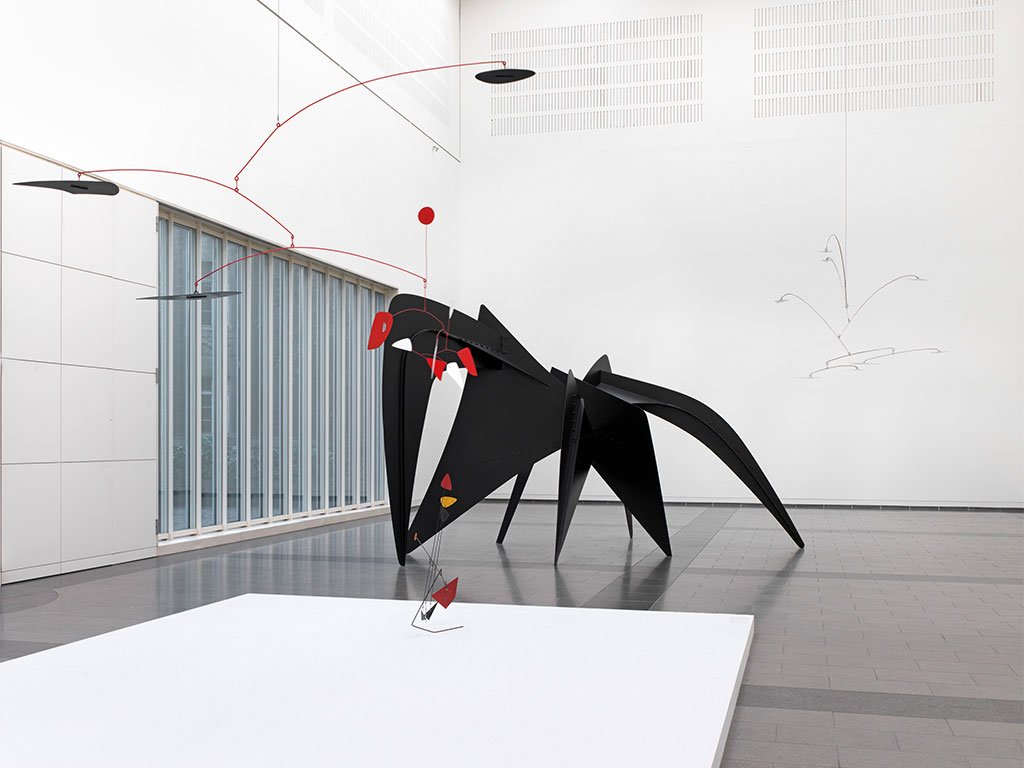The Kunstsammlung Nordrhein-Westfalen mounts a major exhibition of works by Alexander Calder (1898–1976), one of the most important American sculptors of the 20th century. It will be the first large museum exhibition devoted to this innovative artist in Germany for more than 20 years. The selection, consisting of approximately 70 works, will focus on the 1930s and 1940s and will trace Calder‘s path toward abstraction.
Alexander Calder is regarded as the inventor of kinetic – or mobile – art. The presentation will utilize exhibition reconstructions, reference works by other artists, historic films, and experimental music to embed his achievement in the conceptual and artistic milieu of Europe during the period. Like no other American artist with the exception of his friend Man Ray, Calder was a fixture of the Parisian avant-garde between the years 1926 and 1933, and was active in the interval separating abstraction from Surrealism. Without becoming enmeshed in group rivalries, Calder engaged in exchanges with key representatives of a range of artistic tendencies.
He positioned his work within the field of tension between Piet Mondrian’s geometric compositional structures and the playful abstractions of Joan Miró and Hans Arp. “Movement in space” was the grand artistic theme of the 1920s. Providing a new perspective of Calder’s career and the development of kinetic works will be screenings of experimental films by Fernand Léger, Marcel Duchamp, and Man Ray. Nearly all of the artists with whom Calder associated during his stay in Paris were interested in the film medium, in the moving image. He also cultivated friendships with the composers Edgard Varèse and Virgil Thomson, and later with John Cage. Calder was also preoccupied with experimental music, which led to the development of his so-called “noise-mobiles”. This virtually unknown ensemble of works will receive special attention.

